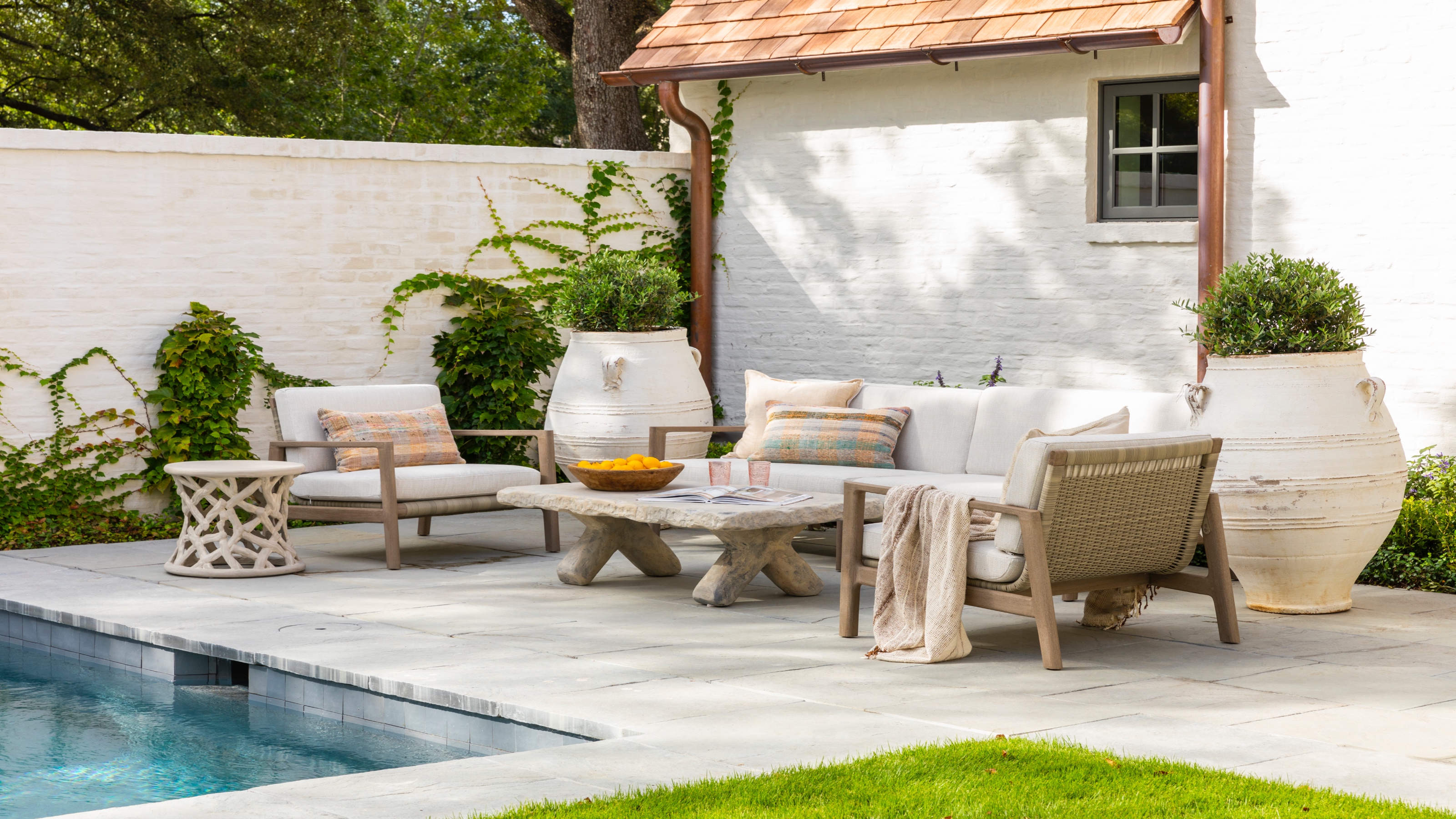
The importance of choosing the best colors for outdoor furniture should not be overlooked. Opting for statement shades or neutral hues will set the tone for your garden, and as an extension of your beautifully-styled home, it’s essential you get it right.
If you’re not sure what shades to go for, you’re not alone – even the most adept at interior design often falter when stepping outside. With bright blooms, outbuildings and garden decor to compliment, it’s easy to lose confidence in your color choices, but it’s important you embrace your natural surroundings, rather than shy away from them.
‘Before deciding on an exterior color scheme, look at surrounding elements such as siding, decking, building materials and the landscape, as well as interior colors that connect with the outdoor area. The ideal garden color scheme should reflect your personal style while enhancing your home’s architecture', says Hannah Yeo, senior manager of color marketing at Benjamin Moore.
We’ve quizzed color specialists and design experts on the best colors for outdoor furniture, taking into account both style and practicality, as well as a few outdoor furniture mistakes to avoid, too.
The best colours for outdoor furniture
When it comes to planning a garden we’re all about aesthetics, but choosing the ‘best’ color for outdoor furniture goes beyond your favorite paint shade; there are practicalities to consider, too. From fading and dust marks to heat absorption and reflection, the drawbacks of certain colors may well influence your choice.
‘Light tones tend to look dirtier faster for example, which is a big con for outdoor furniture if homeowners don’t have the time to clean them as often as they’d like. On the contrary, dark colors absorb heat and might be uncomfortably warm in the summer months’, says Sue Wadden, Director of Color Marketing at Sherwin-Williams.
1. Neutrals
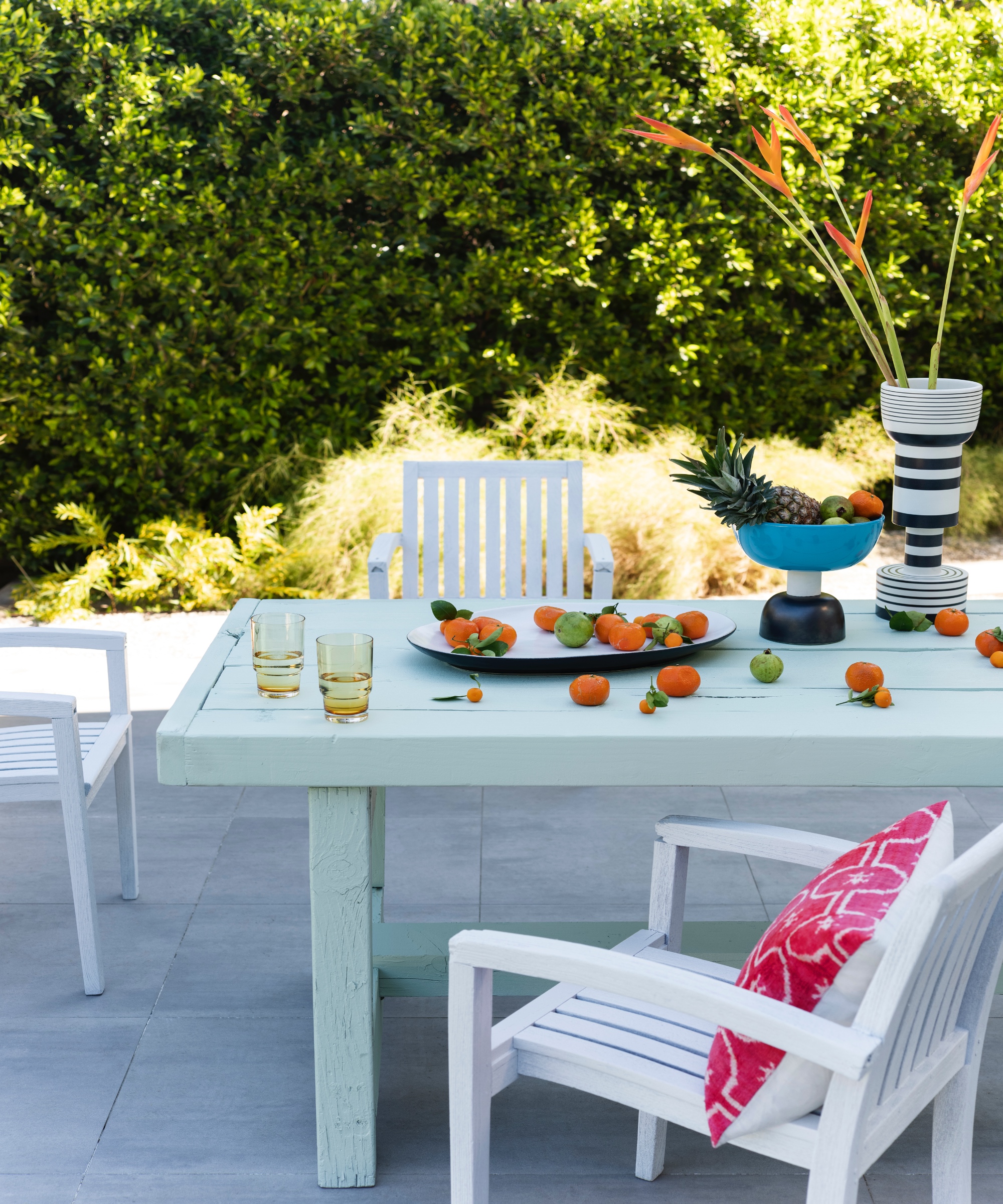
You simply can’t go wrong with neutral shades such as gray, beige and cream; they’re a timeless choice (something to consider when investing in big-ticket items such as outdoor dining ideas) and complement colorful gardens beautifully.
It may seem counter-intuitive, but if you’re a fan of bold hues, opting for a neutral color on your garden furniture is often a better bet, particularly if you tend to follow trends.
‘I am a big proponent of warm neutrals for chairs, chaises, and tables alongside pops of color from cushions, pillows, table linens and blankets. They complement just about any color, giving you the freedom to mix and match outdoor accessories. I must say, I particularly love using blues and greens in my garden décor', says Kathy Kuo, interior designer and founder of homeware brand, Kathy Kuo Home.
Which particular neutral you opt for comes down to personal choice, but experts advise treading carefully with lighter tones.
‘Bright white has a tendency to look dirty very quickly, especially if you live in a dry dusty climate. Instead, opt for a beige, a light gray or a creamy white, so marks don’t stand out’, adds Sue.
2. Earthy hues
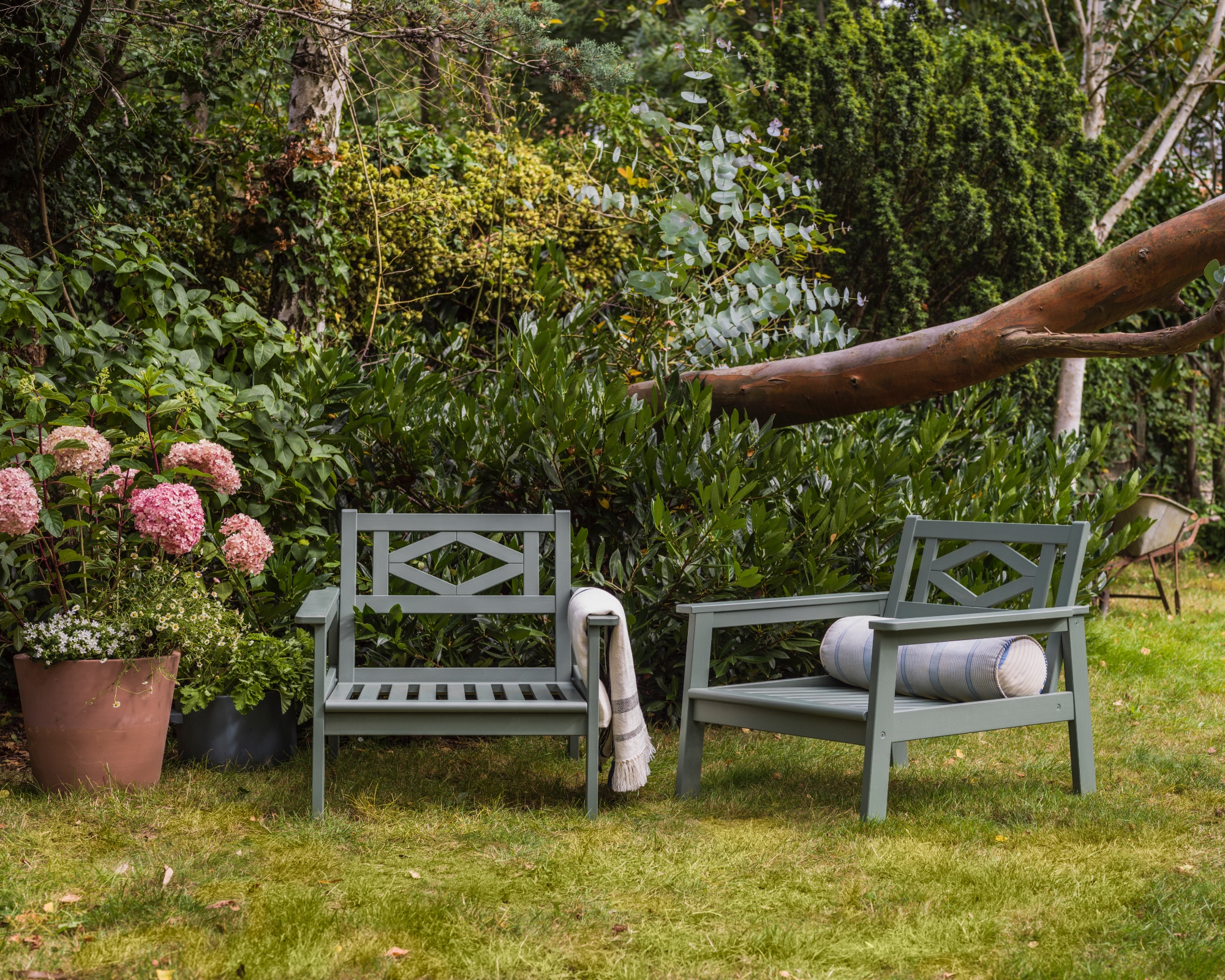
‘With a growing emphasis on sustainable garden ideas, eco-friendly materials in colors that reflect the environment are in demand. Natural wood finishes and recycled materials in neutral and green tones are proving particularly popular at the moment’’, says Sue Wadden.
Greens are the obvious choice, but there are plenty of nature-inspired shades that could add to your garden’s ‘eco’ aesthetic. Take on-trend terracotta, for example. With its deep orange hues, it offers an all-natural pop of color that’s warm and welcoming without looking artificial.
‘Incorporating materials such as wood, rattan, and iron not only adds texture and visual interest but also ensures durability and a timeless aesthetic. Thoughtful placement of these elements fosters a cohesive space where comfort and nature coexist beautifully’, adds interior designer Marie Flanigan, founder of Marie Flanigan Interiors.
3. Pastels
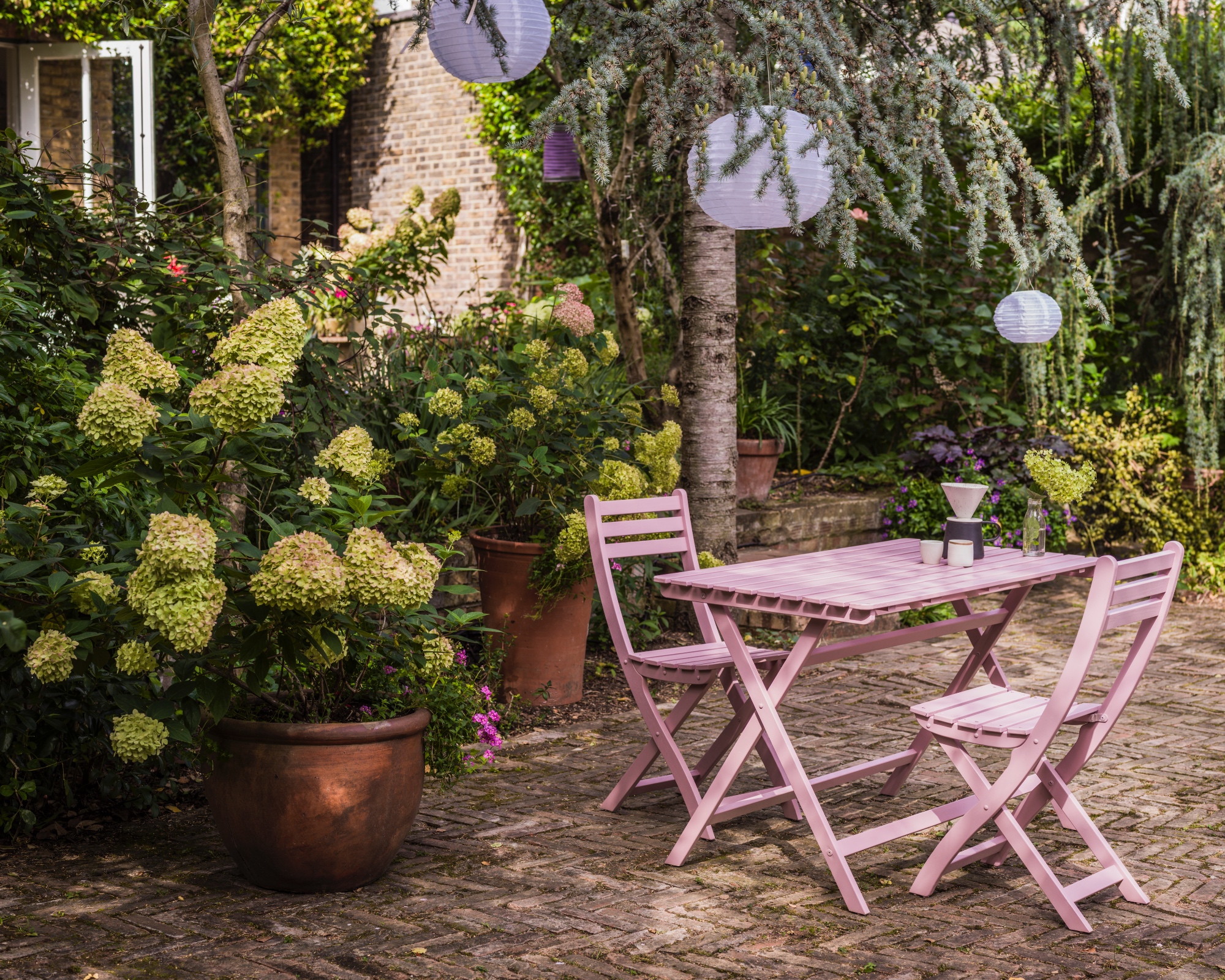
‘Pastels, soft greens and yellows, cottage blues and more approachable, cheerful colors help to create a more welcoming and timeless garden atmosphere – blending in with a traditional garden and maintaining a sense of tradition and elegance’, says Sue Wadden.
A popular choice for those painting wooden furniture, pastel shades are as practical as they are pretty. They reflect heat, preventing furniture from getting too warm. Not just that, but their light tones open up small garden ideas, making them feel bigger than they are.
'If you have a small or rather bland exterior space with some generic fencing, why not bring it to life with some pops of color and clever container planting? To introduce an element of fun, try experimenting with vibrant or fresh shades. Cinder Rose is a cool pink with some blue running through it, making it the perfect pairing with dark, blue toned walls’, says Patrick O'Donnell, Brand Ambassador at Farrow & Ball.
4. Dark tones
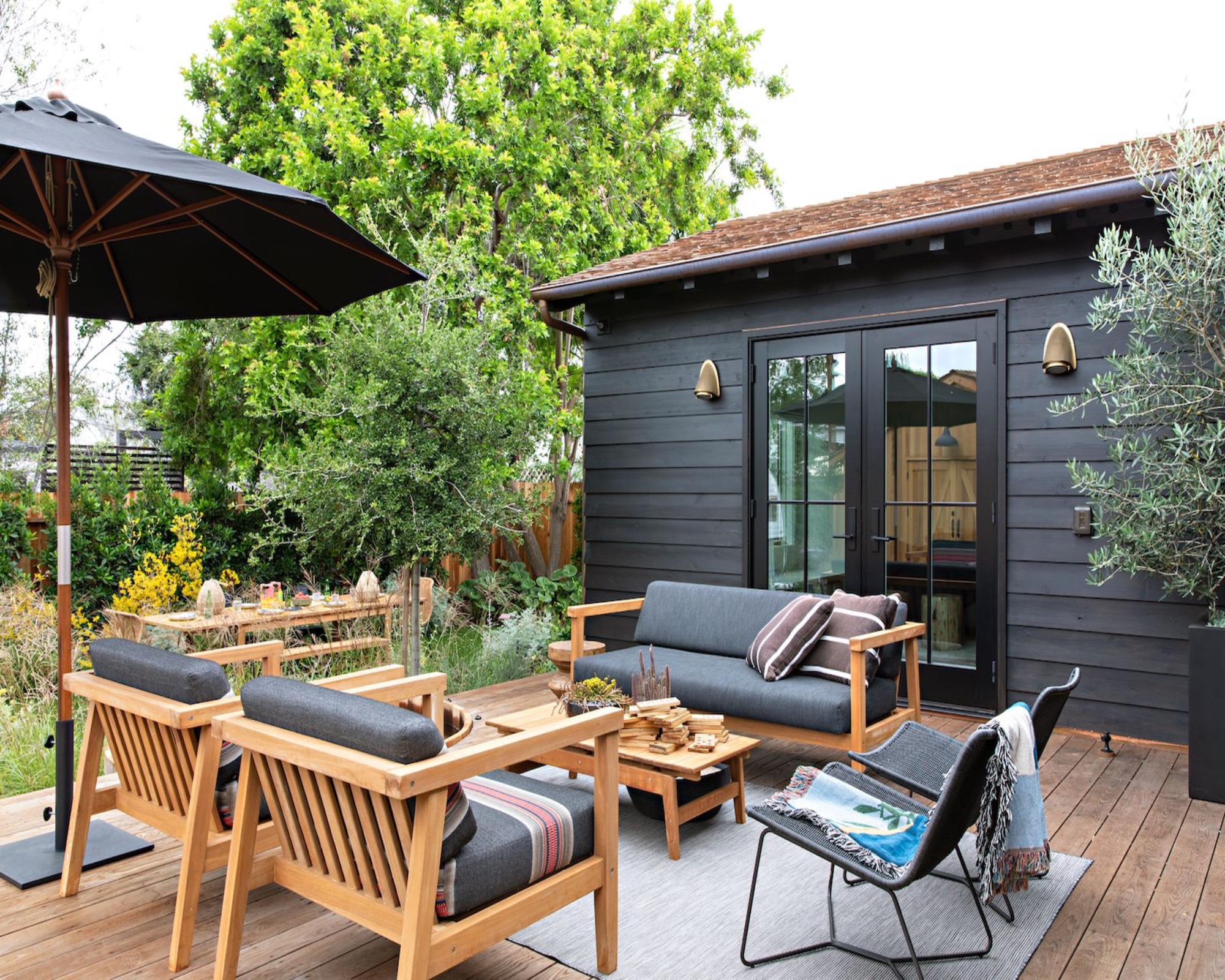
Perhaps not the go-to choice for traditional English garden ideas, moody hues work well in modern garden ideas, where the focus is less on color and more on material – sleek metals, such as aluminum and steel are given their chance to shine against a darker backdrop.
‘Another reason to consider darker outdoor furniture is if you have light-colored exterior walls’, says Hannah Yeo.
‘It brings visual balance and offers functional benefits; colors such as Polo Blue 2062-10 or Ashland Slate 1608 can hide dirt, effortlessly maintaining a sleek and elegant look with a touch of drama’.
Don’t forget to bear climate in mind though; if you live in a particularly hot region, opting for darker furniture is an outdoor furniture mistake you won’t want to make – they tend to absorb heat, making them unbearable to sit on in the summer months.
5. Brights
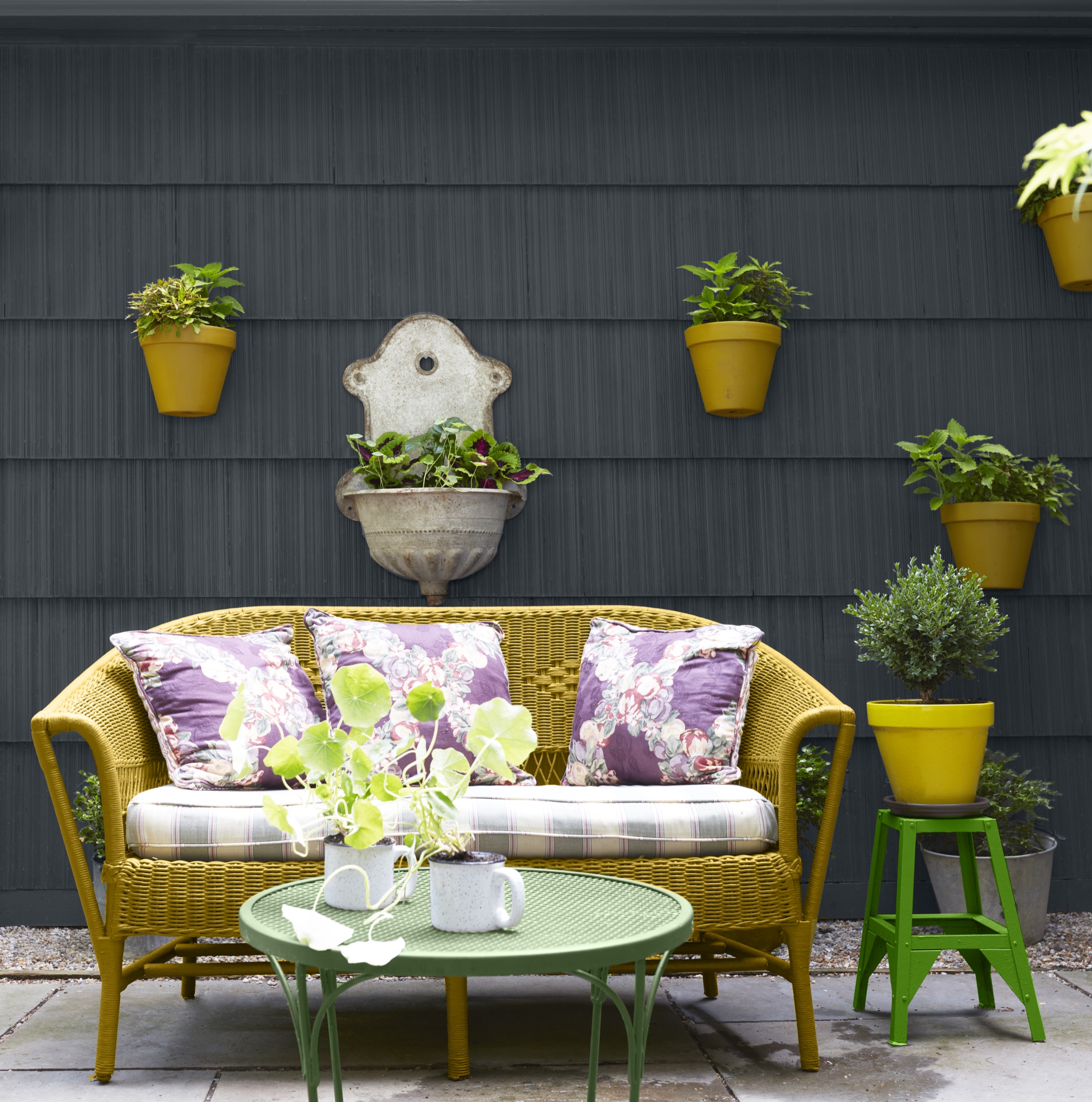
If your garden is somewhat lacking in colorful blooms, introduce a pop of color with bright outdoor living room ideas or apartment patio ideas, instead. While lovely and summery, it has the added benefit of bringing cheer to your backyard space all-year round – just be sure you opt for a weather-resistant finish if you’re using it during the winter months.
It may feel like a daring outdoor furniture trend, but it’s easy enough to tone down; simply opt for a less saturated shade, or use it minimally.
‘Bright pops of reds, sunny yellows and spring greens can be used on a smaller scale to add a playful touch. Painted Adirondack chairs, side tables and trellises are great places to add a wink of color that shows your personality and style’, says Hannah Yeo.
‘Be mindful of exterior color durability, as a few bright, saturated hues – particularly bright oranges and yellows – may fade faster than staple colors’, she adds.
Ultimately, the best color for outdoor furniture comes down to personal taste. However, the best piece of advice the pros can give is not to rush into a decision without considering your backyard ideas first.
‘Which color would look best with your patio ideas? What about the front door or the garden shed? Is your garden filled with eclectic colorful flowers and therefore needs a more subtle furniture color to go with it? Or is it an all-green space that would benefit from a pop of color from their outdoor furniture?
While personal style plays a role, the best color choice also depends on the space you’re working with’, concludes Sue Wadden.







